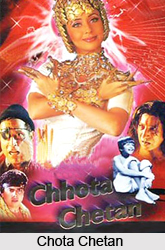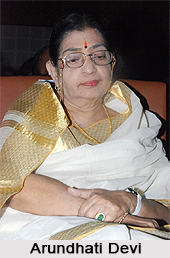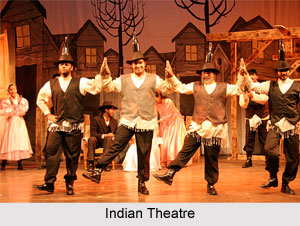 Entertainment in India has a number of dimensions. Tracing the history of entertainment, it can be concluded that since time immemorial man has searched for different ways to entertain himself and, consequently, has also developed several means to achieve it. Entertainment in India includes music, theatre, dance performances, movies and many more that span the complete social structure as well as imaginations of the country and its people. Over time, several factors have cast profound impact on this arena, which have changed the visage and course of entertainment greatly. In ancient times, the entertainment world had a different facet which in due course of time underwent tremendous transformations. In contemporary times, entertainment has become intricately associated with human life from which people derive amusement, food for thought as well as inspirations.
Entertainment in India has a number of dimensions. Tracing the history of entertainment, it can be concluded that since time immemorial man has searched for different ways to entertain himself and, consequently, has also developed several means to achieve it. Entertainment in India includes music, theatre, dance performances, movies and many more that span the complete social structure as well as imaginations of the country and its people. Over time, several factors have cast profound impact on this arena, which have changed the visage and course of entertainment greatly. In ancient times, the entertainment world had a different facet which in due course of time underwent tremendous transformations. In contemporary times, entertainment has become intricately associated with human life from which people derive amusement, food for thought as well as inspirations.
Indian Drama and Theatre
Drama and theatre have formed a major and immensely popular source of entertainment in India. This art has not only played a crucial role in adding to the diversity of entertainment world but have also mirrored the social and cultural heritage, values, ideas and concepts of the society since ages. History of Indian drama states that this art emerged between the periods of 2nd century BC and 1st century AD, when Sanskrit theatre played an introductory role to make people acquainted with the theatre world. This art blossomed greatly up to 10th century. The period was marked by the composition and enactment of a number of plays. Indian drama and theatre however faced a set back in the following years owing to the advent of Muslim colonization, when the art was greatly discouraged. Theatres in India once again gained prominence in 15th to the 19th centuries, when people realized the need to portray and restore the indigenous values of India. This phase also marked the beginning of regional theatre in India which was started with the purpose of making this art acceptable among the different sections of society, overcoming linguistic barriers. British rule in India brought the modern Indian theatre on stages which also acted as a means for India to voice their protest against the colonial rule. Post independence, Indian drama and theatres spread their wings and attained new heights in the world of entertainment in India, in terms of popularity and innovation.
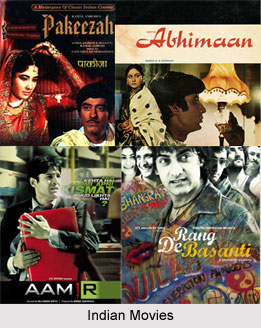
Theatres in India have always followed a heterogeneous trend. In contemporary times, for the apt depiction of the multi ethnic and multi cultural facet of India through this art, a number of experiments and new ideas are incorporated. Important personalities in Indian theatre carved a distinct niche for theatres as well as themselves in the entertainment world. Different forms of Indian theatre evolved over time, which have always amazed the country with their plethora of unique yet delightful ways of depiction. Classical Indian dance drama, traditional Indian theatre, folk theatres, puppet theatres and street theatres are some of the prominent forms that have enriched Indian drama and theatre greatly. Growing popularity of Indian drama and theatres also led to the formation of several Indian theatre stages and theatre schools in different parts of the country to encourage, groom and showcase the talent of numerous theatre artists as well as to promote this exquisite form of entertainment in India.
Indian Movies
Indian movies form another significant source of entertainment in India. However, it is one of the most cherished forms of entertainment that has bloomed exponentially over time. Right from their inception in the year 1912, with a silent movie "Shree Pundalik" made in Marathi language, Indian movies have continued to expand their horizons. Pioneer of Indian film industry, Dadasaheb Phalke, who brought the first full length motion picture on screen, started a new wave in the entertainment world. Indian movie gained popularity in the early twentieth century when low price tickets took this entertainment form to the common man across India. This cheap yet enjoyable medium of entertainment attracted Indian as well as global audiences. Golden era of India movies started from 1940s and continued up to 1960s, which recorded a major number of critically acclaimed movies. Indian movies also started to explore the regional arenas of India which led to the making of Indian regional films. Playback singers, movie producers, directors and choreographers form the different wings of this industry, all of whom contribute to craft a variety of movies. Indian movie actors enliven the different characters of the movie to make the depictions real to the audiences. To encourage these people, a number of Indian film awards have been started which motivate them further.
Indian movies have always been influenced by a number of factors. Initial influence on this industry had been the Indian epics which have help to diversify the plots of Indian movies. Sanskrit dramas later affected Indian movies with the incorporation of music, dance and different gestures. Conveying emotions through lively characters took Indian movies to a different sphere of entertainment where people could connect their lives with the portrayed characters. Traditional folk theatre of India also had a great impact on Indian movies where the socio-cultural heritage of India was aptly showcased. Contemporary Indian movies started taking inspiration from the life and activities of common people as well as from global movies. Entertainment acquired a new facet when fiction and reality both emerged as parallel dominants of Indian movies with numerous subplots that illuminated even the darkest and concealed corners of human life.
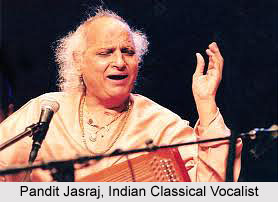 Indian Music
Indian Music
Music has been an inseparable part of Indian society since ages. Man has adopted music as one of the most common means of entertainment as well as expressions and a significant part of socio-religious life. Melody is the main ingredient of Indian music blended mesmerizing with lyrics. History of Indian music reveals that Indian classical music, including Hindustani and Carnatic music, was one of the first forms of this art. Vedas and Upanishads have prominent mentions of the origin of Indian music. After this era, traditional Indian music gained prominence, which comprised the Thumri, Tappa, Baul songs and many more. With the passage of time a number of influences caused the Indian music to diversify its forms greatly. With the popularization and commercialization of Indian music and number of different genres gradually evolved which reflects diverse social and cultural heritage of India. Folk music in India developed as an expression of folk life and culture in which distinct region developed their own form such as Bihu of Assam, Dandiya of Gujarat and Lavani of Maharashtra. Ganasangeet emerged as a special category of music during the rule of British Empire in India, which echoed patriotism and social messages. Later, Indian music shared the fame of Indian movies and became an important ingredient of movies without which they lacked their vigour. With globalization, another impact on Indian movies was enlisted which was the western music. Fusion of different genres further created some enchanting melodies which have left permanent footprints in the world of entertainment. Indian music band is another unique facet of this entertainment form which comprises of an amalgamation of contemporary ideas and off beat musical renditions.
With evolving genres, Indian musical instruments also became a significant part which further augmented the beauty of this art. Percussion instruments, wind instruments, string instruments formed the major categories which further branched into a variety of instruments developed in different regions of the country. Contribution of Indian classical instrumentalists cannot be overlooked, who have practically breathed life to these instruments. Indian classical vocalists play the most significant roles, by making the Indian music vibrant and enchanting with their mesmerizing renditions and melodious voices.
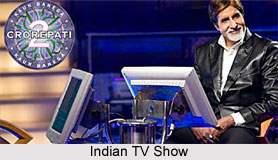
Indian Television
With the advent of television in India, Indian film industry has encountered a tough competition in the world of entertainment. Terrestrial television had its first telecast in 1959 and since then it is expanding its arena till date. The regular transmission initiated in 1965 in collaboration with All India Radio. Indian television broadcast initiated in Delhi and covering a long way it reached almost every house very soon. In the year 1982, Indian television started its national telecast and the year also marked the introduction of colour TV. Doordarshan was the only channel back then and major television series of the initial era included Mahabharata and Ramayana. Television became a more popular household amenity in 1980s with the introduction of two more national channels viz. DD 2 and DD Metro. The subjects of television program attained diversity with changing time and social structure. The programs of initial era of television industry included Hum Log, Buniyaad, Bharat Ek Khoj, the Sword of Tipu Sultan, Chandrakanta and many more. Television shows have also entertained different age groups with distinct programs suiting the temperaments of different ages.
Indian TV actors and actresses earned no less popularity than the celebrities of Indian movies. A number of private channels gradually joined this industry and contributed to it with a variety of shows. Starting from one national channel, Indian television is now broadcasting hundreds of channels attracting viewers of different choice, moods and needs. The plethora of Indian television shows includes fictitious serials, reality shows, documentaries etc. Regional channels have also attained a significant position in this industry catering the people belonging to different regions.
Indian Radio
Another fascinating form of entertainment is the Indian radio which started its broadcast service in Madras (Chennai) through a private channel in 1924. Later with the approval of British Government, the channel spanned its arena to Kolkata and Mumbai also. After the bankruptcy of the channel in the following period, it was owned and continued by the Government in the name of All India Radio. This mode of entertainment includes music, plays, discussions, news etc. Indian radio personalities have played an important role in popularizing this industry with their charming voices that captivates numerous listeners across the country. Regional channels gradually started developing too which made Indian radio enjoyable among different communities of India.
The key role in moulding and diversifying the entertainment in India has been played by the audience who have popularised and made this industry an immensely significant one. The choices, moods, needs and fantasies of audiences have exquisitely painted the canvas of Indian entertainment in the most varied yet vibrant hues. Thus the combined contribution of artists as well as audiences has successfully made the entertainment in India an important part of society.
